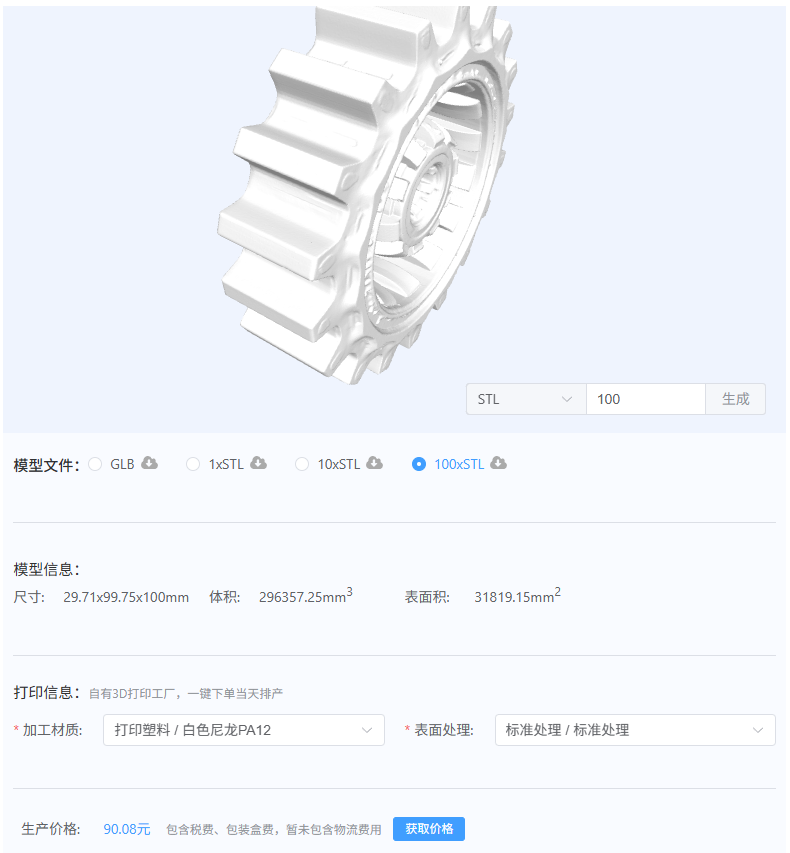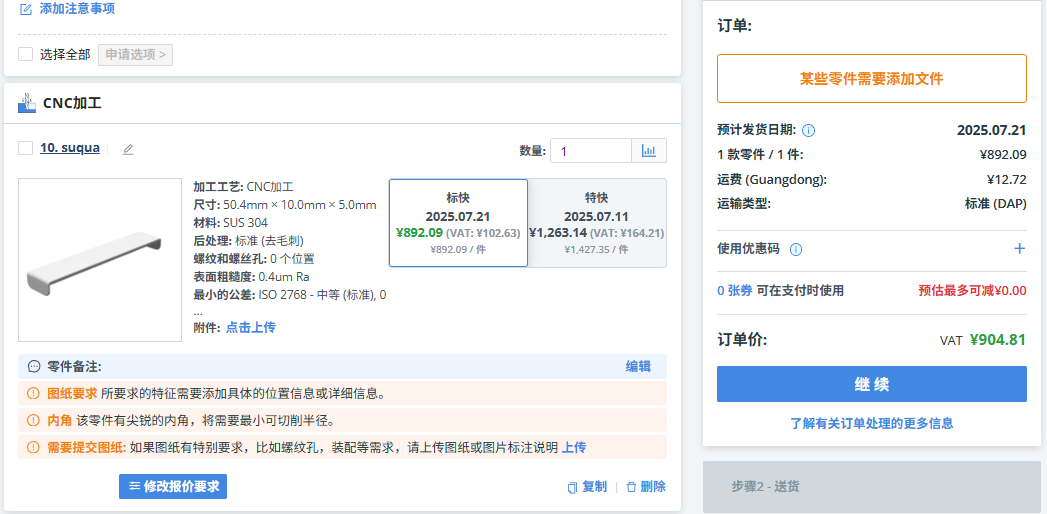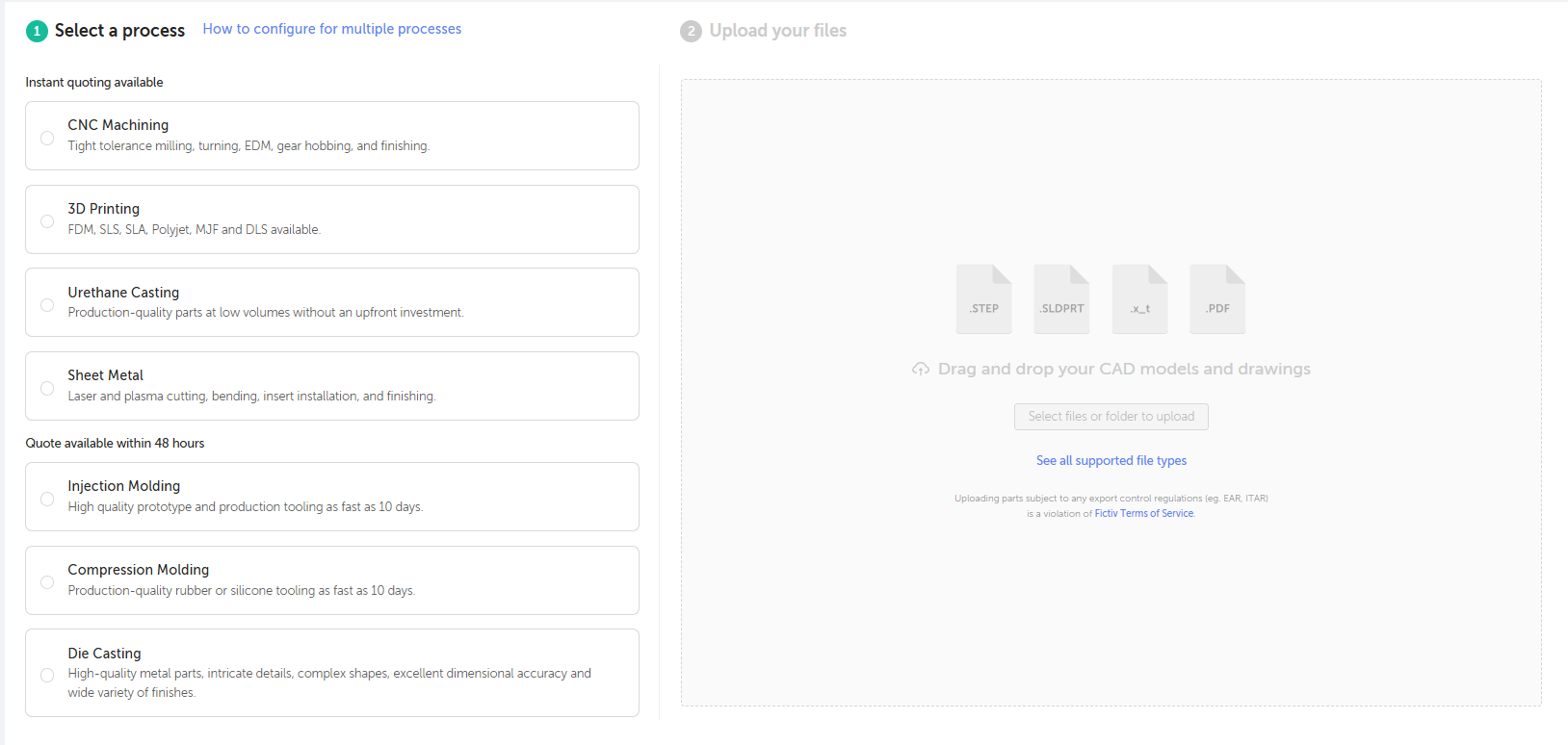Comparison of AI-Driven Manufacturing Platforms: Fictiv, Xometry, and Leanplans

Last month, global custom parts manufacturing platform Fictiv was acquired by Japanese manufacturing giant MISUMI Group for RMB 2.5 billion. This was not just a cross-border acquisition—it signaled a strong validation of the “AI-powered manufacturing” business model.
Fictiv is widely recognized as a key driver of online and automated part manufacturing. One of its core technologies is an AI-based pricing and manufacturing assistance system. This acquisition sends a clear signal: the application of AI in manufacturing is no longer just a concept or a marketing buzzword. It is now deeply embedded in real business workflows and delivering measurable commercial value.

01. How Far Has AI Come in Manufacturing?
To help industry professionals better understand the current market landscape and how AI is being implemented in the manufacturing of custom parts, we conducted a comparative review of three representative digital manufacturing platforms—Fictiv, Xometry, and China-based Leanplans.
The comparison focuses on three core processes: design, quoting & ordering, and DFM (Design for Manufacturing) analysis.
We used the same batch of 2D and 3D files and uploaded them to the AI quoting systems of each platform. We then recorded the feedback results, response times, and user experience. The outputs were compared against manual estimates. For the DFM analysis, we reviewed process feasibility, material selection, and tolerance recommendations.
Evaluation Criteria:
- Design Stage: Rendering and 3D modeling capabilities
- Transaction Stage: AI quoting (formats supported, logic behind pricing), ordering usability
- DFM Evaluation: Process feasibility, material machinability, tolerance logic
- Hands-on Testing: User experience across the full flow from design to order
02. Design Capability Comparison
In the design stage, neither Fictiv nor Xometry currently offers instant rendering or CAD modeling features. Customers must prepare their own drawings and technical data before accessing the quoting tool.
Leanplans, on the other hand, provides an early-stage 3D modeling tool that can generate standard 3D models from simple sketches, structural descriptions, or 2D engineering drawings. The AI can be manually overridden and adjusted. Though still being refined, this feature has already been used in multiple prototyping projects, helping clients go from sketch to 3D model in minutes—especially valuable in early product development.
Screenshot: Leanplans 3D modeling interface
| Stage | Feature | Fictiv | Xometry | Leanplans |
|---|---|---|---|---|
| Design | Visual Design | None | None | AI-trained models generate 3D visuals from sketches/text |
| Design | CAD Modeling | None | None | Custom-trained LLM generates industrial-grade models from text or CAD |

03. Practical Testing
1. Quote Accuracy
Sample Set: 9 parts (3 CNC, 3 3D printed, 3 sheet metal)
Results:
- Fictiv: ±100% deviation from manual estimate
- Xometry: ±40% deviation
- Leanplans: Within ±20% deviation
Fictiv and Xometry both use deep learning to analyze 3D models, referencing historical orders and adding manual validation to finalize pricing. However, in our tests, quotes were often delayed and imprecise—Fictiv in particular had a deviation around +100%, and Xometry around ±40%. Both platforms took 40–60 seconds to return results.

Leanplans leverages a manufacturing-oriented pricing engine, factoring in machine specs, processes, and material cost. It supports both 2D and 3D file formats and generates quotes in just 5 seconds, with significantly higher accuracy.
Screenshot: Leanplans quoting interface
2. Response Time
| Platform | Avg. Time (s) | Files Fully Quoted |
|---|---|---|
| Fictiv | 60 | 3/9 |
| Xometry | 40 | 7/9 |
| Leanplans | 5 | 8/9 |
Leanplans has optimized both model lightweighting and parallel computation to achieve 12x faster response than Fictiv.
3. Usability
- Fictiv and Xometry only support 3D formats for AI quotes—2D requires manual intervention.
- Leanplans accepts both 2D and 3D uploads and auto-detects formats.
While Fictiv and Xometry require users to convert 2D drawings to 3D before use, Leanplans supports one-click uploads and provides a visual breakdown of costs by material and finish. Users can click on questionable items in the quote to see detailed reasoning and get instant optimization suggestions—dramatically improving decision efficiency.
04. Pros & Cons Summary
| Platform | Strengths | Weaknesses |
|---|---|---|
| Fictiv | Global network, mature operations, high brand recognition | Shallow AI use, slow response, no 2D quoting, limited DFM insights |
| Xometry | Similar strengths to Fictiv | Accuracy fluctuations, limited file support, reliance on manual review |
| Leanplans | AI-native design to 3D, ultra-fast quoting, deep DFM, visual UI | Still developing complex rendering, limited global supply chain, some manual steps in advanced modeling |
Fictiv and Xometry excel at global supply chain orchestration, making them suitable for large-volume, multi-region projects. But their AI capabilities still rely heavily on human operators and pre-defined rules.
Leanplans, meanwhile, is built around AI from the ground up, excelling in local process modeling, quoting speed, and DFM analysis—making it ideal for fast, flexible prototyping and short production cycles.
05. Different DNA, Different Paths
At the core, the three platforms differ not just in features, but in their foundational DNA.
Fictiv and Xometry originated as supply chain networks. Their AI is a tool for streamlining operations, especially in routing and capacity matching.
Leanplans is an AI-native company. Its systems are designed to interact with customers—from sketches, to files, to pricing, to feedback. The goal is to shorten R&D cycles and empower engineers and designers with intelligent tools.
This difference shapes their growth logic:
Fictiv/Xometry: AI as a backend tool for better resource coordination
Leanplans: AI as a frontend solution for smarter decision-making
Over time, these paths may converge. But right now, they represent two distinct trajectories for AI in manufacturing: one focuses on supply chains, the other on user experience.
The real battleground lies in data feedback loops. Whoever builds the strongest cycle of data-driven model training, customer usage, and continuous feedback will lead the next wave of AI + manufacturing.
About Us
Leanplans is a fast-growing AI company focused on vertical large model development. Our core R&D team comes from the Harbin Institute of Technology International AI Research Institute, with multiple patents and proprietary IP.
By combining AI large models with real-world manufacturing, we’ve developed the Leanplans AI Multi-Agent System—helping users in design visualization, DFM, cost estimation, and process optimization.
Through our digital system and cloud factory network, we provide an end-to-end solution for flexible production of multi-variety custom parts—from design to delivery.
*For business or investment inquiries, feel free to contact us.
Get a Free Quote!
Leave your contact details, or directly visit our online quoting platform to experience the future of material selection and production. Get expert material evaluations, tailored DFM analysis, and fast 24-hour production turnaround.
- Free Quote: Upload your designs, and our AI-powered engine will generate a custom quote in seconds.
- Talk to an Expert: Connect with one of our engineers via WhatsApp for immediate assistance.


